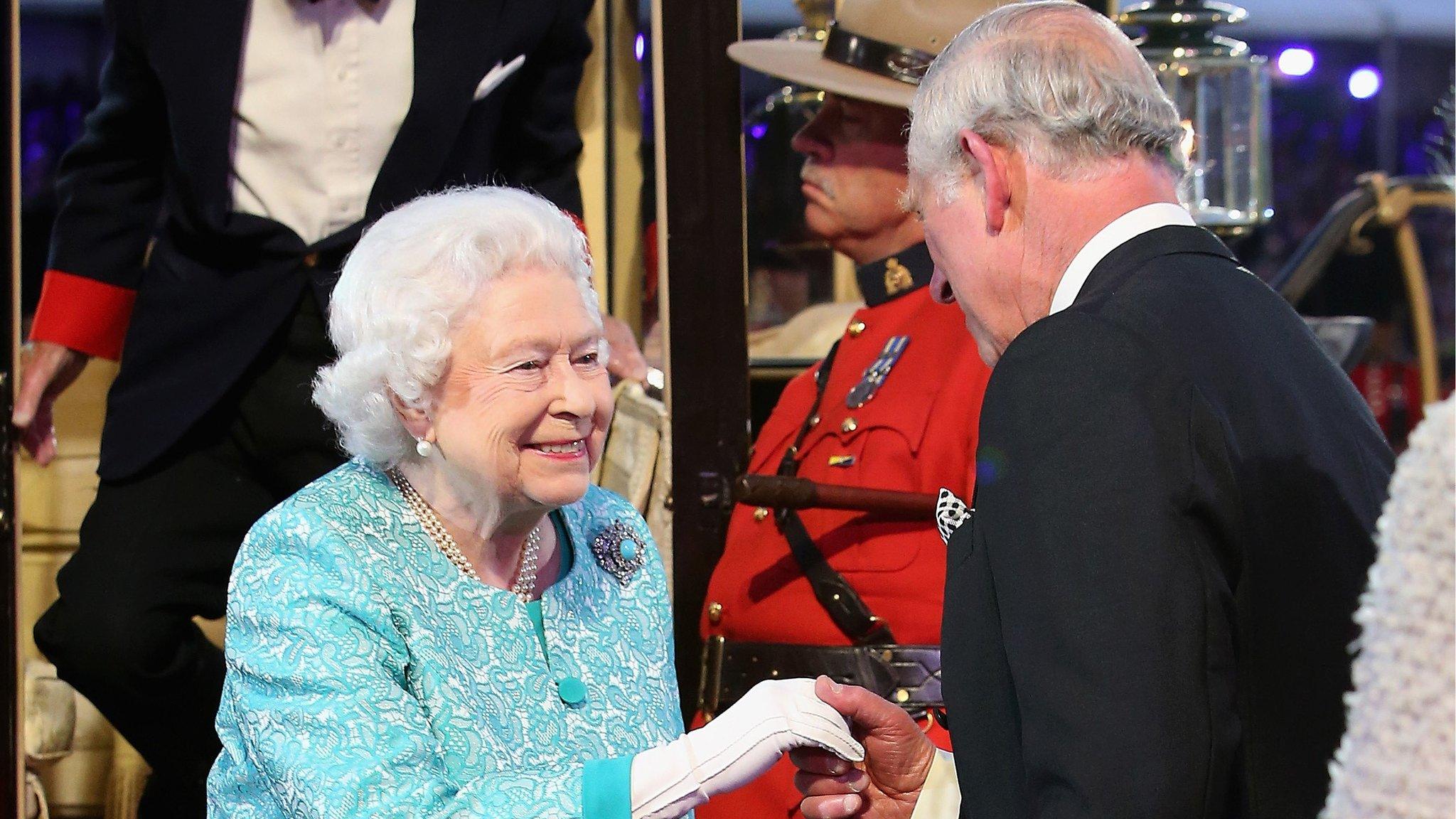Platinum Jubilee: Windsor Castle displays Queen's coronation gown and robe
- Published
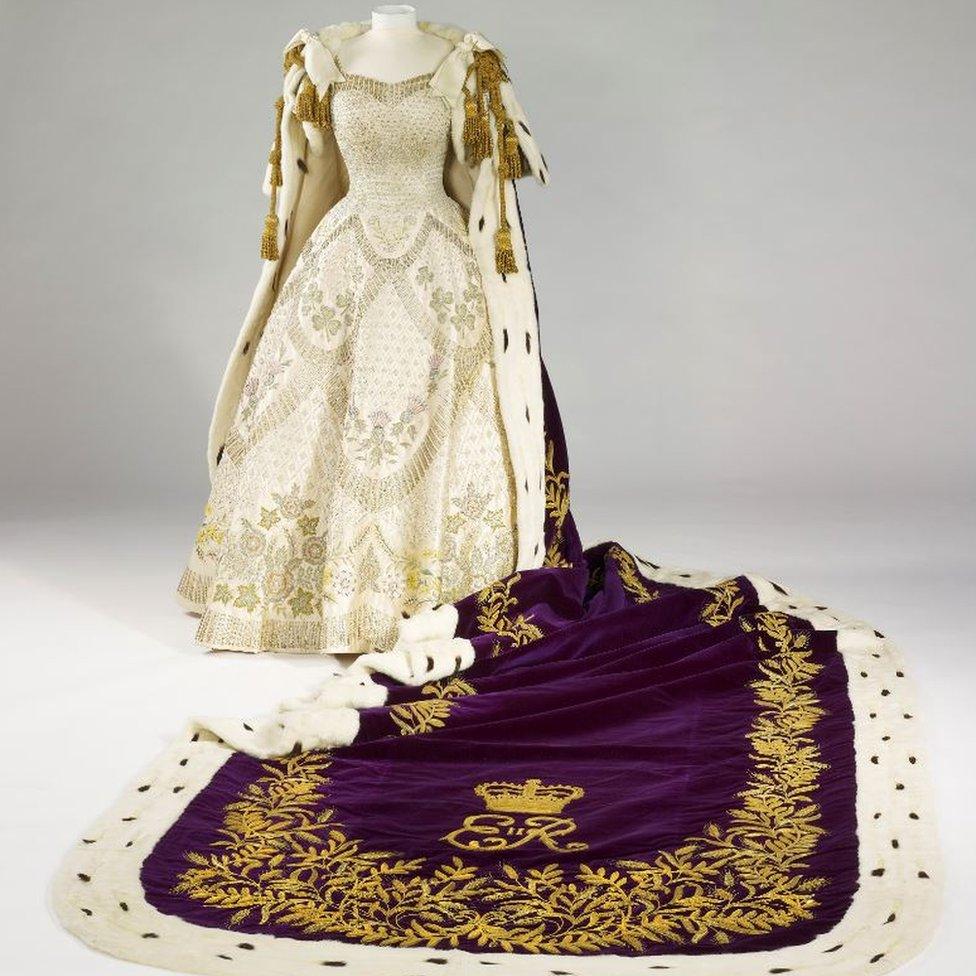
The exhibition runs until 26 September at Windsor Castle
The Queen's coronation dress, robe of estate and jewels are going on public display at Windsor Castle to mark her Platinum Jubilee.
Visitors will be able to examine Sir Norman Hartnell's white duchesse satin gown, worn by the Queen when she was crowned in 1953, aged 27.
The robe of estate was made by Ede & Ravenscroft from purple, silk velvet.
It too is on show until 26 September, alongside the Queen's diamond coronation necklace and earrings.
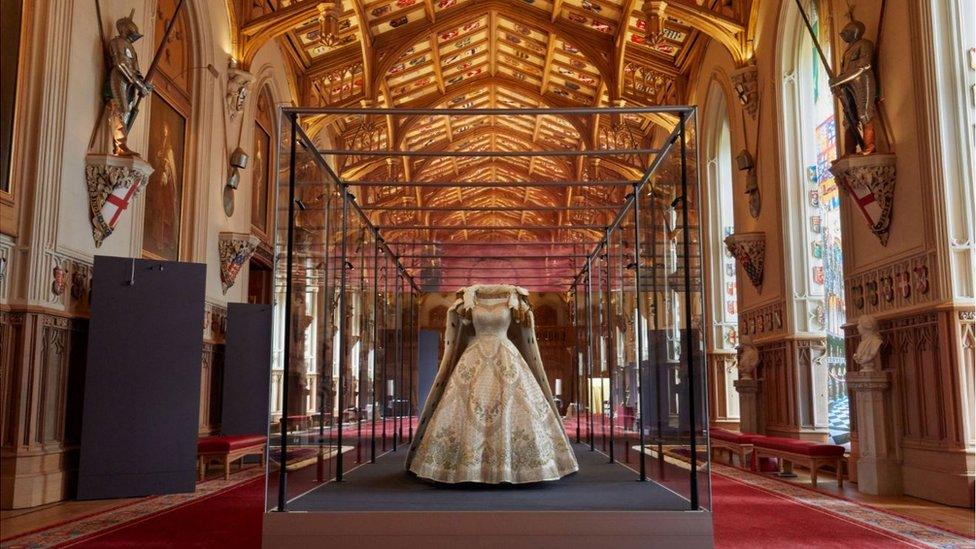
The coronation gown and robe of estate will be on display in St George's Hall - the largest room in the castle in Berkshire

An estimated 27 million people - over half of the UK population at the time - watched the coronation service on television
Encrusted with thousands of seed pearls, sequins and crystals, the gown's design was the last of eight options put to the Queen by British couturier Sir Norman.
At her request, as well as floral emblems in gold and silver thread and pastel-coloured silks, it also includes the seven independent states of which she is monarch, together with those of the UK's home nations.
The 6.5m (21ft) robe of estate is also on show in the St George's Hall - the largest room in the Berkshire castle.
It took 12 seamstresses, using 18 types of gold thread, 3,500 hours to complete the embroidered cipher and the border of wheat ears and olive branches, which symbolise prosperity and peace.
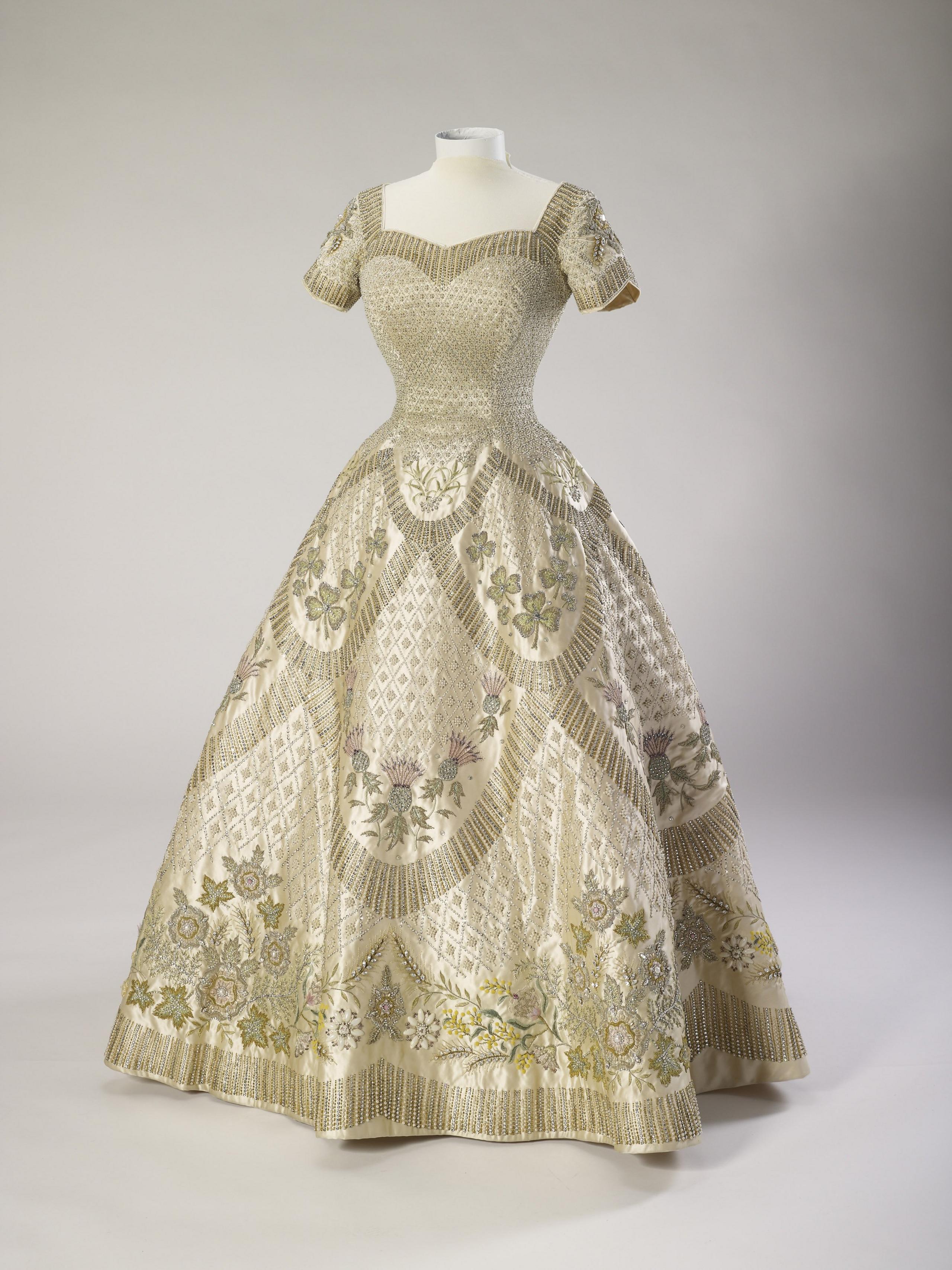
The gown design was the last of eight options put to the Queen by British couturier Sir Norman Hartnell
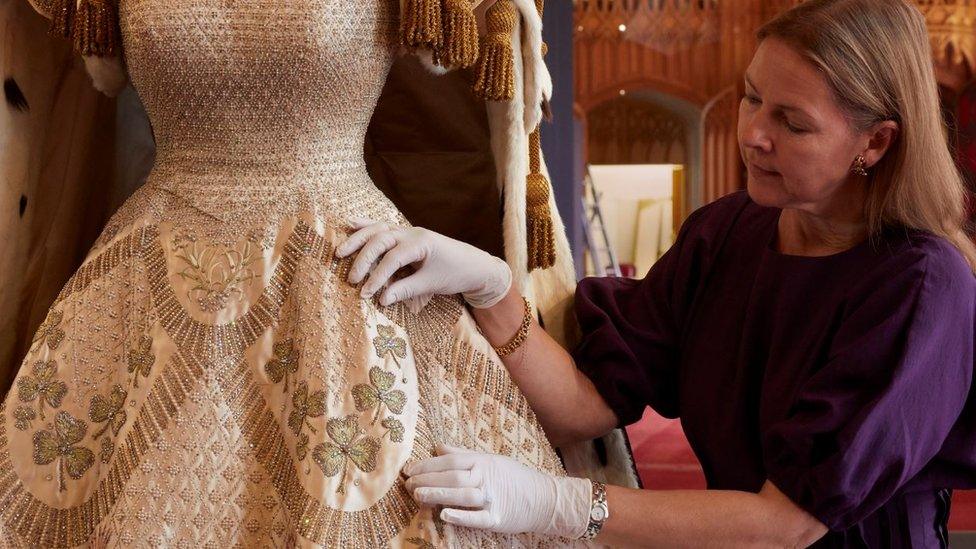
It is encrusted with thousands of seed pearls, sequins and crystals
The coronation necklace and earrings will be on display in the Lantern Lobby.
Originally made for Queen Victoria in 1858 and comprising 28 diamonds, including the Lahore Diamond gemstone pendant, the necklace was also worn by Queen Alexandra, Queen Mary and the Queen Mother, at the coronations of 1902, 1911 and 1937.
The coronation earrings - a pair of round brilliant-cut diamonds and two pear-shaped pendants - were also worn by Queen Mary and the Queen Mother.
An estimated 27 million people - over half of the UK population at the time - watched the 1953 coronation service on television, while a further 11 million listened to the radio broadcast.
On display for the first time is a group of four brooches belonging to the Queen, each representing a nation of the UK, with a sprig of shamrock for Northern Ireland, sprays of daffodils for Wales, thistles for Scotland and roses for England.
The brooches are made of gold, set with white, pink and yellow diamonds and, for the shamrock, emeralds.
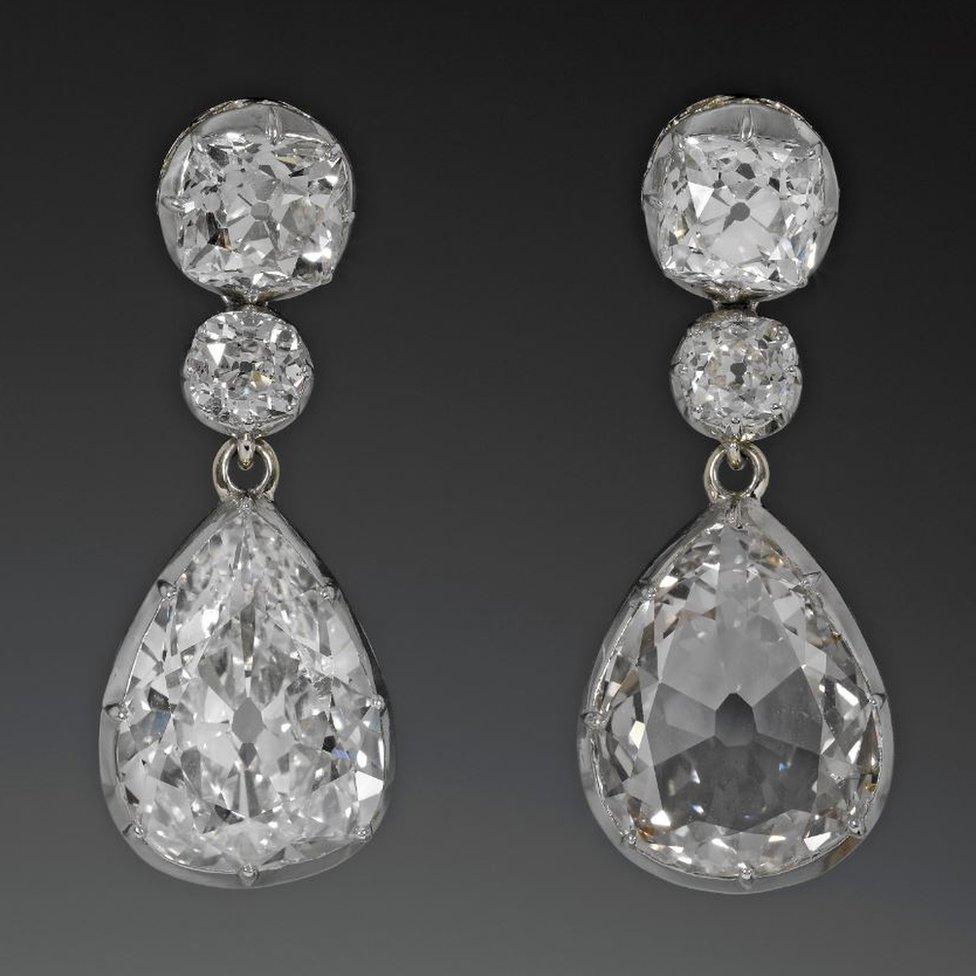
The Queen's coronation earrings and matching necklace will also go on show
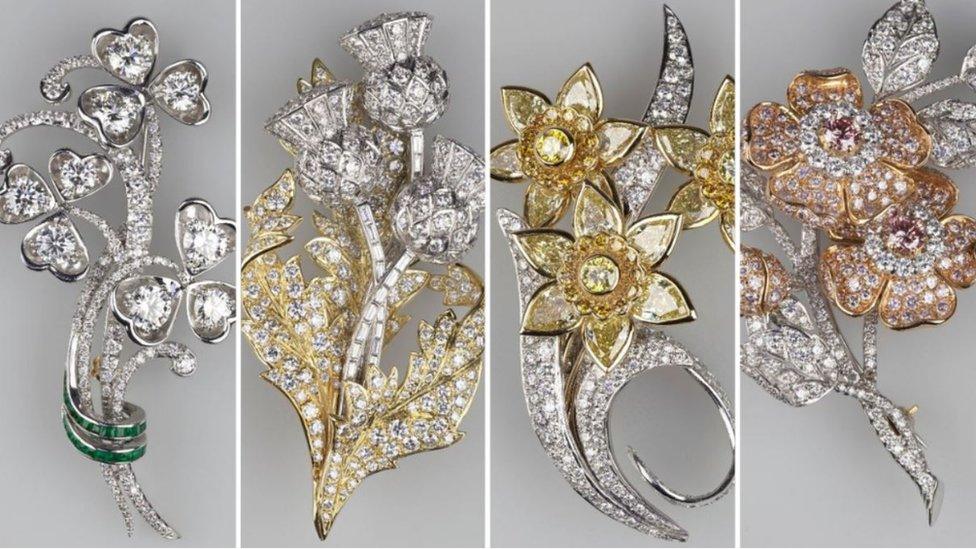
Four brooches belonging to the Queen will go on public display for the first time as part of the exhibition

Follow BBC South on Facebook, external, Twitter, external, or Instagram, external. Send your story ideas to south.newsonline@bbc.co.uk, external.
- Published16 May 2016
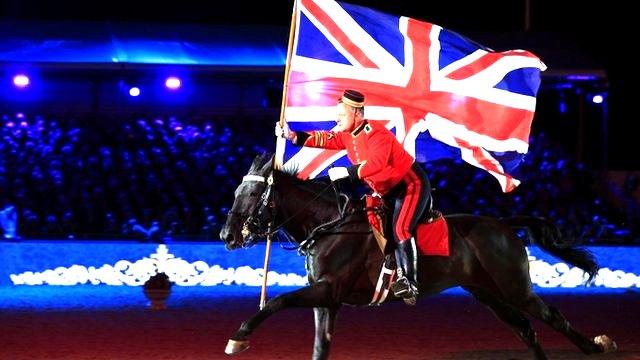
- Published16 May 2016
